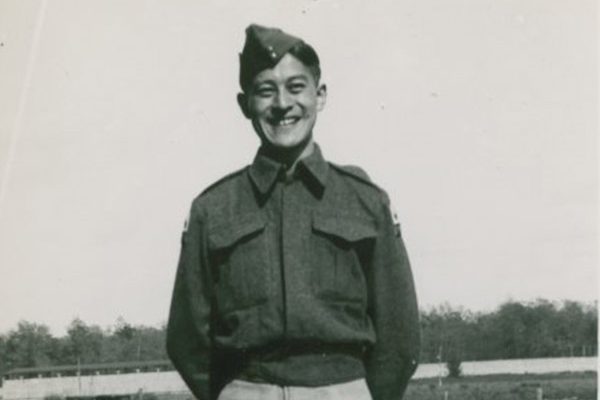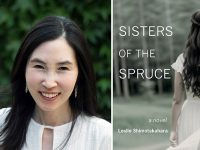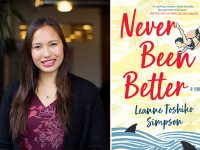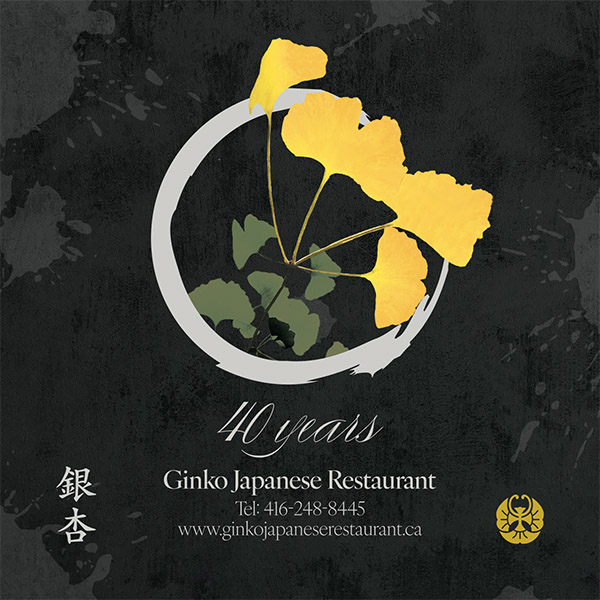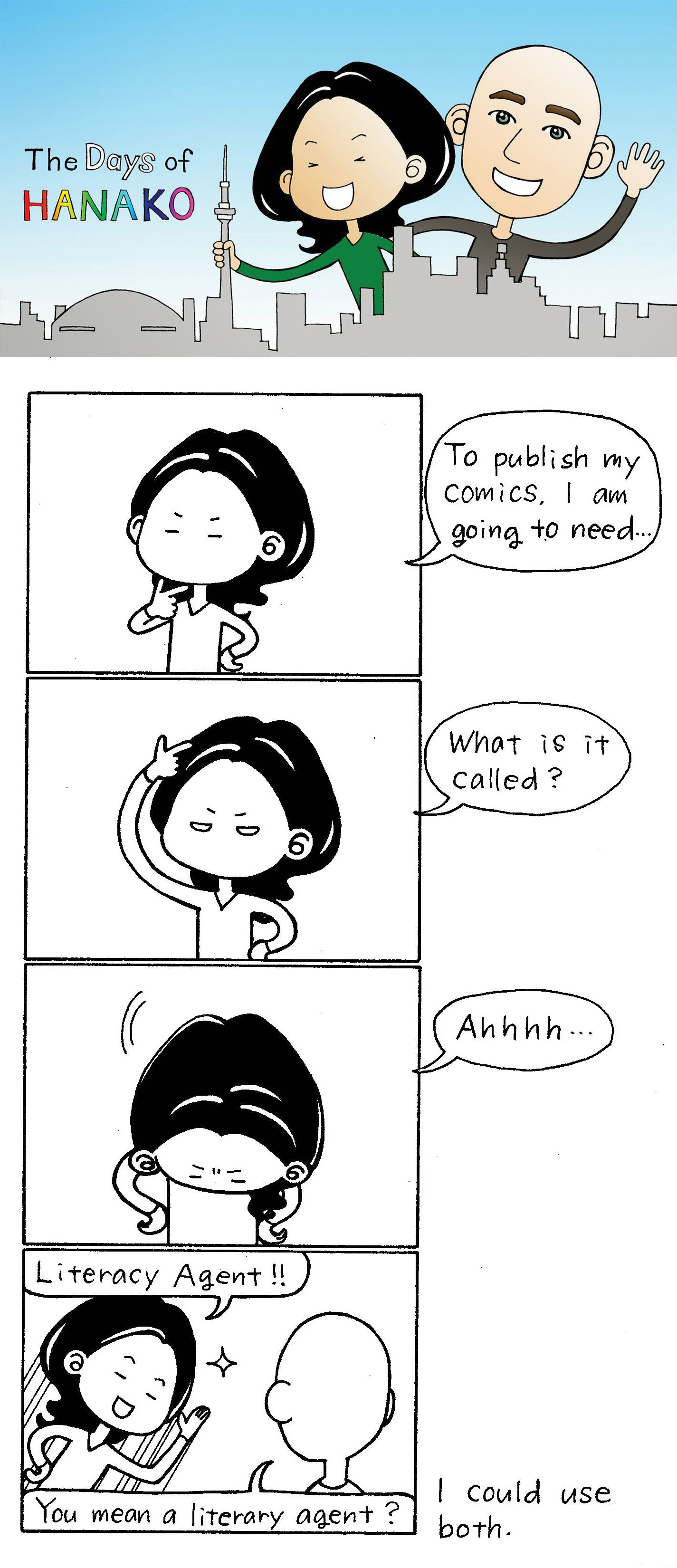Roy Matsui hoped enlisting in the Canadian Army would represent the Japanese Canadian community positively. Photo credit: Nikkei National Museum.
By Megan Koyanagi
BURNABY — At the height of the Second World War, Roy Matsui and his family were forcibly uprooted to the Sandon BC internment camp.
As soon as the opportunity arose, he applied to leave the camp at the age of 17 to work in Toronto, Ont., where he later signed up to join the Canadian Army with many of his friends. After graduating from the S-20 Japanese Language School amongst friends, Matsui was granted leave before being deployed. He later requested an extension, and when he returned, he discovered that his entire platoon had been deployed to Southeast Asia without him. Matsui was instead stationed as an interpreter and mail censor for the Canadian Army at the POW camp, Angler in Ontario.
The selected photograph depicts Roy Matsui in the midst of his position at Angler. Matsui’s memoir describes the misfortune that Matsui felt in his new position, “when I learned that I would be assigned to the Internment Camp at Angler, ON as the camp interpreter, I was furious… This was not what I joined up for” (Roy Matsui Memoirs, page 6).

Title: ” Roy Matsui at Angler.” Collection: Matsui Collection. Repository: Nikkei National Museum & Cultural Centre. Accession Number: TD 1471.1. Year: 1946.
His intentions upon joining the Canadian Army had never been to guard fellow Japanese Canadian men who had dared to protest the loss of their freedoms and the separation from their families. These men were incarcerated without being charged or being allowed to stand trial, and some were people with whom he had a personal connection. Despite his unwanted posting at the prison camp, Matsui remained connected to his S-20 classmates by exchanging letters with those stationed overseas.
Remarkably, Matsui kept many of the letters he received from his S-20 colleagues while at Angler. In these letters, his friends helped remind him why he had chosen to enlist in the Canadian Army and kept him up to date on the news of the Nisei (second-generation) Japanese Canadian men from the S-20 school.
One letter from Sgt. Eiji Yatabe expresses his sympathies for Matsui’s position at Angler. Yatabe prompts Matsui not to “feel too badly about your job, Roy, for it may be a blessing in disguise. You may not see the world, but you’ll get to know and understand the ways of men, for which you’ll be a better man” (NNM TD 1471).
Yatabe’s letter hints at the difficult juxtaposition of Matsui’s identity as a Japanese Canadian and his presence as a person with unwelcome authority over those wrongfully imprisoned. His words are meant to offer support to Matsui and show the connections made between friends. His belief that he was helping his country by enlisting in the Canadian Army was challenged not only by the prisoners at Angler, who saw him as a traitor but also by most of the other soldiers at Angler, who viewed his Japanese heritage with distrust.
A letter from Sgt. Sadao Nikaido encourages Matsui not to worry about life in the Army because “in the Army you can’t find contentment, satisfaction, nor joy. Wherever you go, there [are] certain complaints of one kind or the other in various degrees [that] come up, decreasing the morale of soldiers to a great extent” (NNM TD 1471).
This excerpt can be inferred to be in reply to Matsui’s difficulty with his placement at Angler. Nikaido’s advice to remember that people always want more than they have offers insight into the challenges that soldiers face in the Army. These letters inform Matsui’s time spent in the Army and the camaraderie he shared with members of the S-20 school.
In an interview about his experience in the Canadian Army, Matsui says, “Why we enlisted? People keep asking us that, and it was not because we had a lot of national pride in us. It was, I think, merely to sort of show that we wanted to fulfil our obligations as Canadian citizens, that we were just as good as any other Canadian citizen” (Sedai Interview with Roy Matsui, 2010, 0:25. JCCC 2010.047).
Matsui’s participation in the Army was from a sense of responsibility to represent the Japanese Canadian community in a positive way. After the war, Matsui focused on his career and became a successful architect in Toronto. He went on to enjoy a wonderful life alongside his wife, Mary, and their family, always remembering the S-20 friends who offered support along the way.
For research access to the Matsui Collection before it becomes available on our online database, contact Linda Reid at lreid@nikkeiplace.org. Explore more from the museum at www.nikkeimuseum.org.
***







 21 Mar 2023
21 Mar 2023
 Posted by nikkeivoice
Posted by nikkeivoice 